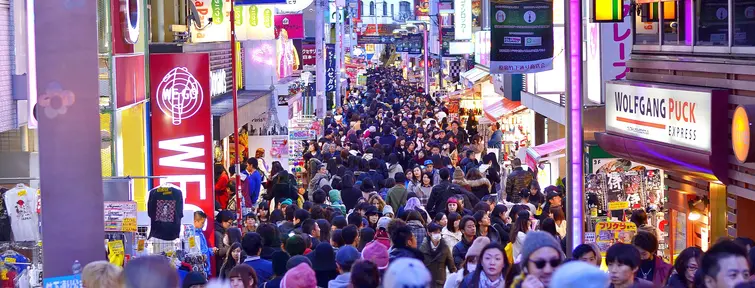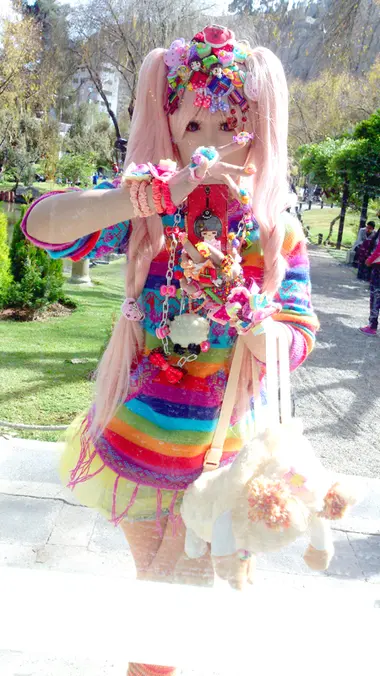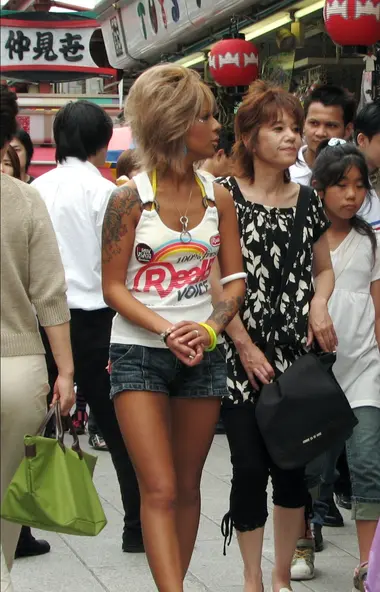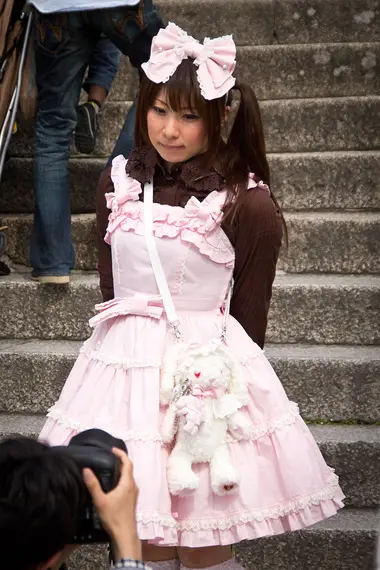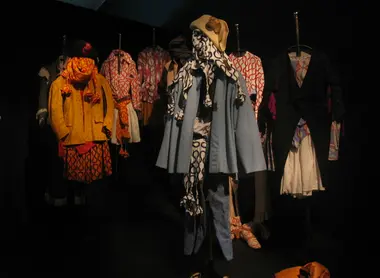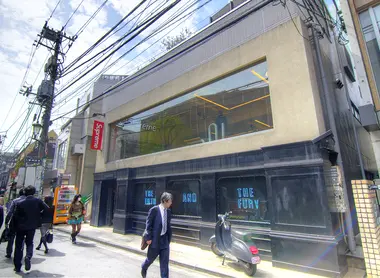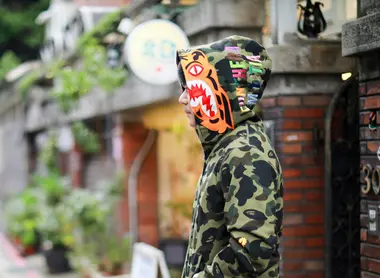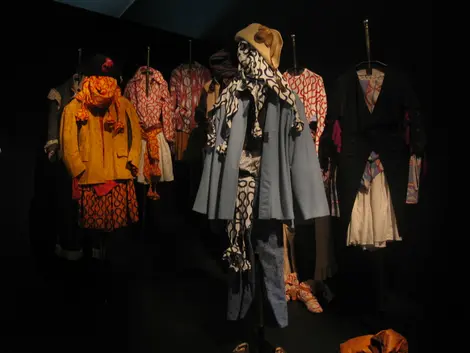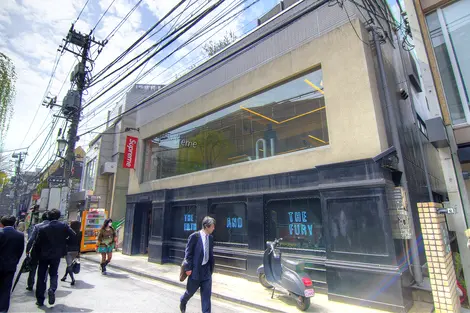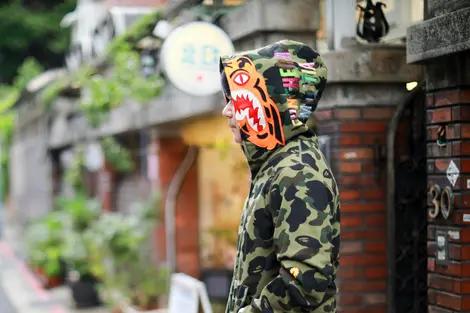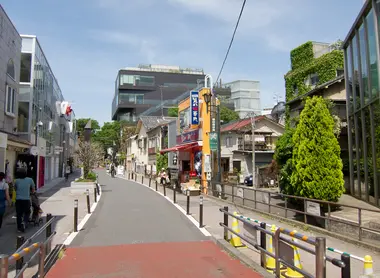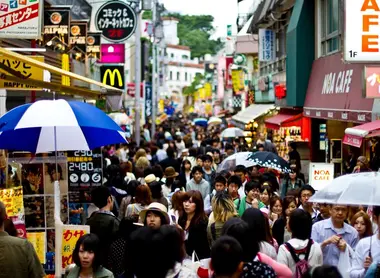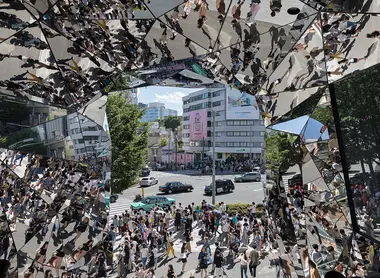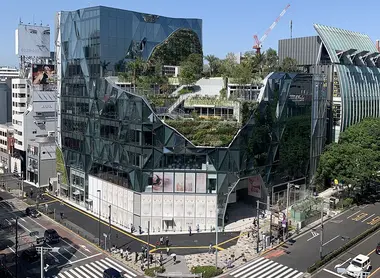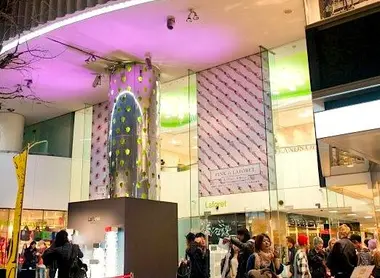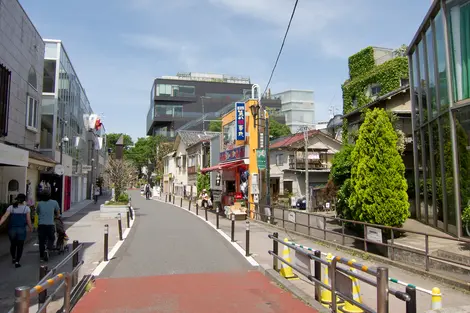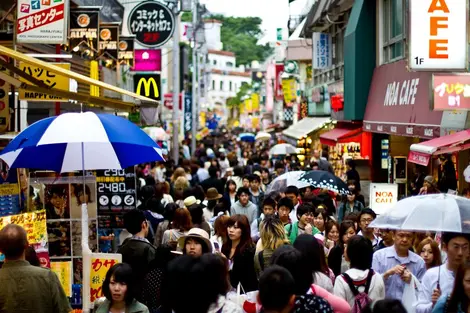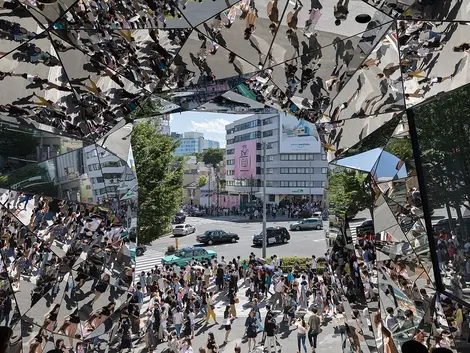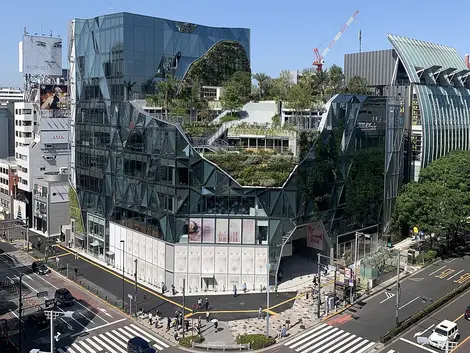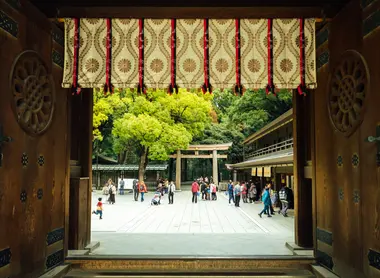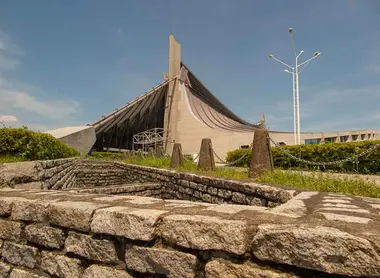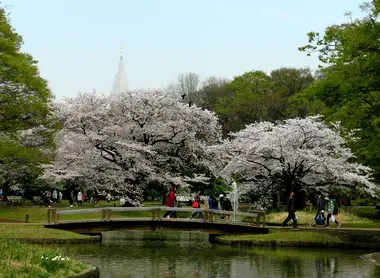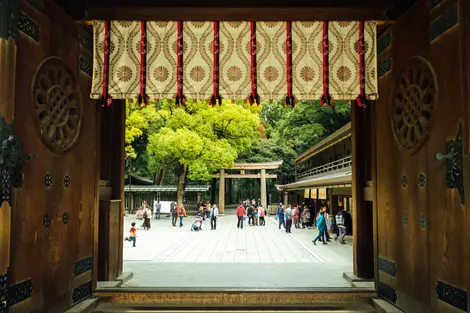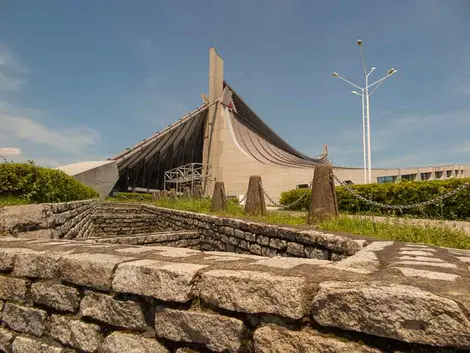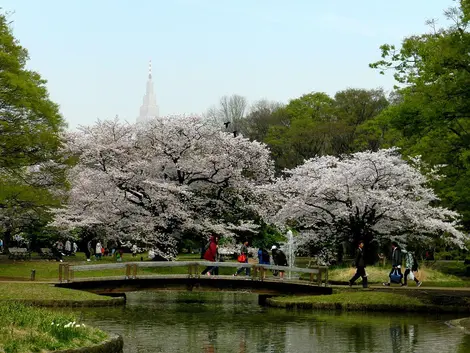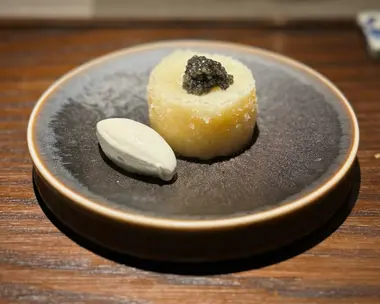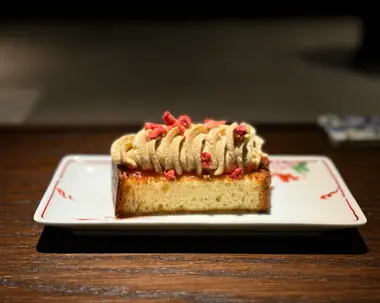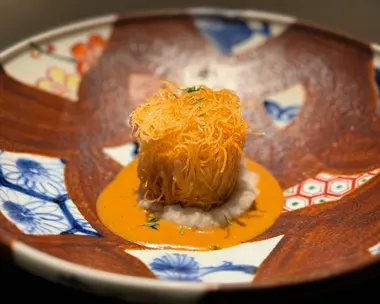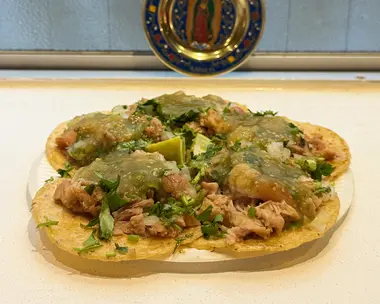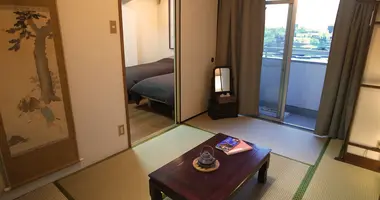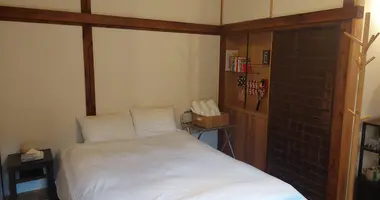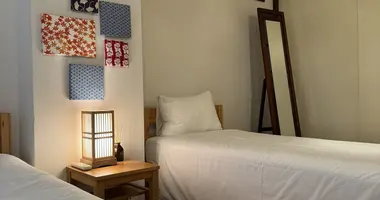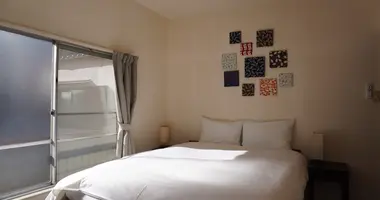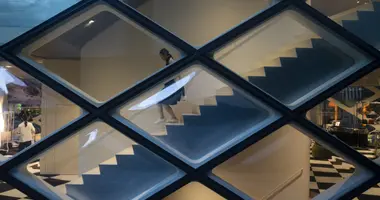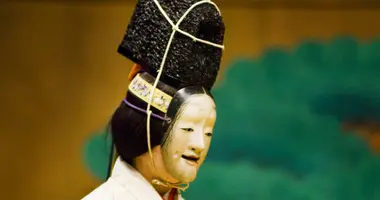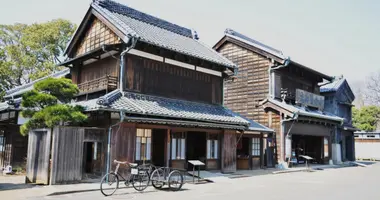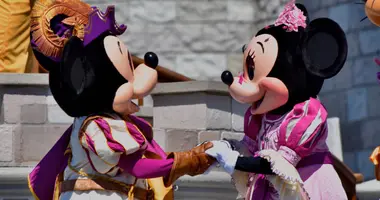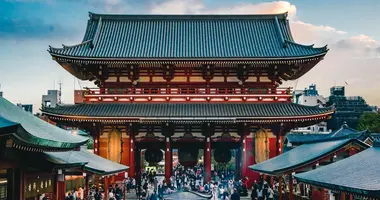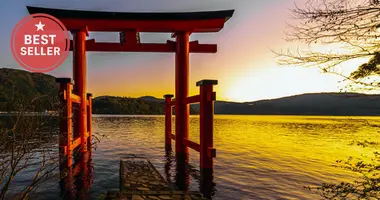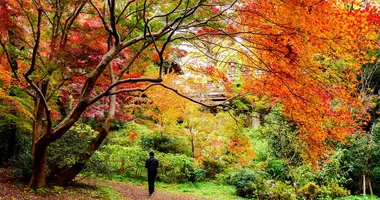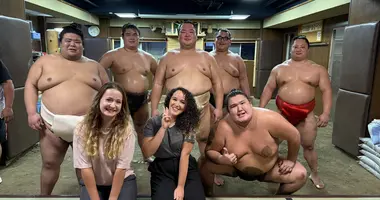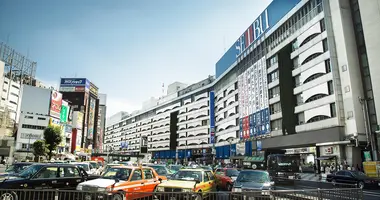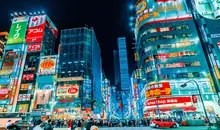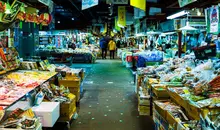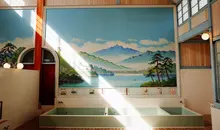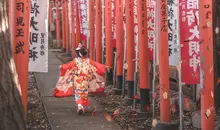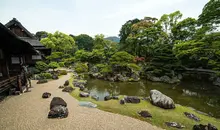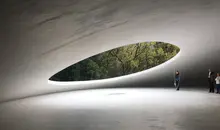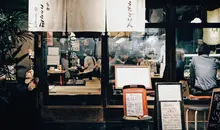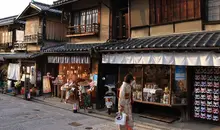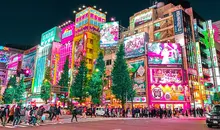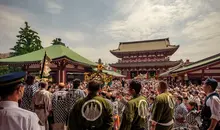Harajuku—weaving the threads of Tokyo's streetwear and culture hub
- Published on : 10/10/2025
- by : Joshua
- Youtube
Always at the center of trends for Tokyo’s youth, Harajuku is a continually evolving area where eccentric fashion and streetwear establish an unshakeable foothold. A few steps from Meiji-Jingu Shrine, it is the perfect example of the juxtaposition between modern and traditional Tokyo.
What to see, what to do
A capital for commerce and fashion
Harajuku established itself in the 1990s as the meeting place for young Japanese people who were discouraged by mass consumption and the standardization of frantic globalization. The faithful of the Harajuku district want to carry an offbeat culture, both in clothing and music.
In this district of Harajuku, young people in search of trends and innovations find themselves. In contrast to the rigidness of work and school life, eccentric aesthetics are defined by DIY detailing and distinct styling. Subcultures like Lolita, Gyaru, Visual Kei, and Decora would unofficially mark Harajuku as their command posts. Often at the forefront of these movements are students and graduates from Tokyo’s most notable fashion and art schools, such as Bunka College and Tokyo Fashion College. Then, publications like FRUiTS Magazine would work to document the street looks in the 90s, delivering the culture to the world stage.
At the same time, iconic names in the fashion industry would begin to take form. The likes of Hiroshi Fujiwara with FRAGMENT, NIGO of A Bathing Ape, Jun Takahashi of UNDERCOVER, and Shinsuke Takizawa of Neighborhood and many more would go on to spearhead their brands with world-renowned cult followings.
Labels from overseas would also become symbols of the area. The elegant restlessness of London’s Vivienne Westwood, the unapologetic power of New York’s Supreme, and the tongue-in-cheek dynamism of L.A.’s XLarge present as some of Harajuku’s most institutional brands. In this vein, western-influenced street culture is held in strong regard in Harajuku, with countless sneaker resell shops and secondhand stores lining the narrow streets.
It’s because of this that shopping in Harajuku goes well beyond simply a time-kill, as the aforementioned names only barely scratch the surface.
Harajuku is one of the world’s fashion capitals, a pilgrimage for the clothing obsessed from around the world. Hit up the best shops in the area per your taste, and take your time to do it, as doing so is spending your time wisely.
Shopping recommendations
With this being said, a fully comprehensive list of the best shops in Harajuku is an insurmountable task for one section in one article. However, here are a few that offer good shopping for clothing, accessories, and home goods for a variety of tastes:
Clothing and apparel:
- Lad Musician
4 Chome-26-35 Jingumae, Shibuya, Tokyo 150-0001
The rocker-themed aesthetic label is known for its unapologetic use of the color black and its contrasting silhouettes of skintight jeans with oversized tops. Their floral print items are some of the most anticipated releases every season.
- Noah Clubhouse
4 Chome-26-29 Jingumae, Shibuya, Tokyo 150-0001
The New York City brand was founded by Supreme’s original apparel designer, Brendan Babenzian and his wife, Estelle-Baily Babenzian. The label focuses on sustainability and simple branding with influences of classic Americana and skate culture. The Harajuku shop is designed after a western-style boathouse.
- Not Conventional Harajuku
〒150-0001 Tokyo, Shibuya, Jingumae, 3 Chome−21−10
Black and white with avant-garde silhouettes is the calling card for his well-established independent brand. For many, this is a great shop to pick up Yohji Yamamoto-esque designs at more accessible prices, but rest assured, the brand has a distinct, more youthful identity all its own with a comfortable place in Harajuku’s scene.
- Fullcount Harajuku
3 Chome-20-7 Jingumae, Shibuya, Tokyo 150-0001
Japanese-made denim and other staples are available in the highest quality at Fullcount. While the fabrics are largely produced and sourced within Japan, the cotton is often from Zimbabwe and Egypt, notable for their long strands. Japanese Americana is one of the most celebrated aesthetics in Tokyo’s fashion scene, with Fullcount being one of the most reputable brands.
- Worm Tokyo
〒150-0001 Tokyo, Shibuya, Jingumae, 2 Chome−26−5 2F
Deadstock and in-demand sneakers make up the shelves. Nike and Air Jordan brands, Adidas, New Balance, ASICS, and other models are available for those who weren’t able to hit on the apps or in the raffle. Located under the UNION store for a great double dip.
- GR8
〒150-0001 Tokyo, Shibuya, Jingumae, 1 Chome−11−6 2.5 F
GR8 has become a major pillar for contemporary fashion brands in Harajuku in the modern day. With a vast array of different labels and a convenient location within the Laforet building—don’t be surprised to see some of Tokyo’s most prolific Fashion Week personalities shopping here on the weekend.
- Nepenthes
5 Chome-44-1 Jingumae, Shibuya, Tokyo 150-0001
The parent company of iconic brands such as Needles, South 2 West 8, and Engineered Garments, the modest storefront is in a lesser-visited part of the shopping district and consists of two floors with different products.
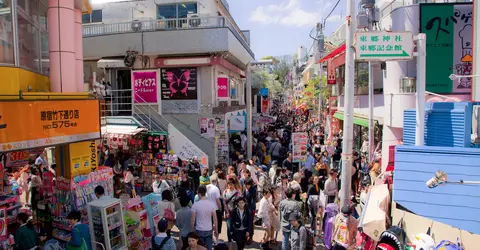
Harajuku
@camknows on Flickr, CC BY-NC-SA 2.0
- OZ Abstract
NAKATA Bld B1F 3-21-12, JINGUMAE SHIBUYA-KU TOKYO 151-0001 JAPAN
Tokyo’s silversmithing scene is one of the most prolific in the world, with a variety of makers with distinct aesthetics and design philosophies. OZ Abstract is one of the best known, and in their Harajuku shop located down a set of unassuming stairs, their gothic-style, rocker-influenced accessories take center stage within the grungy interior.
- retaW
〒150-0001 Tokyo, Shibuya, Jingumae, 4 Chome−28−12
With legendary Hiroshi Fujiwara at the creative helm, this apothecary brand offers soaps, perfumes, and diffusers with Japanese-themed scents. All the products are located within special refrigeration units. FYI, the name is pronounced “re-too.”
- Jason Markk
〒150-0001 Tokyo, Shibuya, Jingumae, 4 Chome−32−7
The sneaker-cleaning product manufacturer has a special boutique in Harajuku that does extensive cleaning for shoes in a nice and refined environment. The staff are very diligent and will assess your needs well before taking your shoes in. There is also merchandise from the brand as well as cleaning supplies to bring home.
- Ramidus Tokyo
3 Chome-21-12 Jingumae, Shibuya, Tokyo 150-0001
A sublabel for the famous Porter/Yoshida Bag Company, Ramidus offers nylon bags with sleek, contemporary designs that are fully made in Japan. Though black is the brand’s primary color, their roster of designs has expanded over the last few years.
- HOMEGAME Tokyo
〒150-0001 Tokyo, Shibuya, Jingumae, 3 Chome−20−21
Specializing in fitted sports caps and other streetwear essentials, HOMEGAME features exclusive colorways of classic New Era 59Fifty models. Jerseys and other collectibles are on sale as well.
- Fender Boutique Harajuku
〒150-0001 Tokyo, Shibuya, Jingumae, 1 Chome−8−10 The Ice Cubes B1F〜3F
The legendary musical instrument manufacturer has their largest boutique in the world on one of the main streets of Harajuku. With Japan-made and Japan-exclusive instruments, as well as Fender Custom Shop facilities, any musician ought to visit the four-story facility.
- Kiddy Land
6 Chome-1-9 Jingumae, Shibuya, Tokyo 150-0001
Kiddy Land as a shop originally opened back in 1950, and it has been at the forefront of collectible trends ever since. The entrance is instantly recognizable and unapologetically embraces the cute and kawaii of Tokyo’s pop culture. Get your Sonny Angels at the same place you get your Sanrio goods.
- Converse White Atelier
〒150-0001 Tokyo, Shibuya, Jingumae, 6 Chome−16−5 HOLONⅢ
This branch of the need-no-introduction Converse brand of sneakers offers made-in-Japan models as well as a custom workshop in the basement that allows customers to personalize a pair of Chuck Taylors that are ready to pick up the same day in most cases!
Malls and shopping streets
Aside from individual shops and businesses, there are certain parts of the Harajuku district with a standout identity and iconicness all their own. Definitely be sure to check them out when visiting!
Likely the first location many think of when mentioning Harajuku, this commercial street runs from Harajuku Station out towards the district’s main intersection. Along the way, a medley of different shops, cafes, food stalls, and other businesses can be found. Many appeal largely to tourists; others stand as hidden gems for the Harajuku hip and savvy. Be wary that on weekends, the foot traffic is nothing to scoff at.
- Tokyu Plaza Harajuku HARAKADO + Tokyu Plaza Omotesando OMOKADO
These sister buildings are located diagonally from each other at the corner between Harajuku and Omotesando. OMOKADO has been an institution of the area for a while, famous for its escalators that go through a tunnel outfitted with a mosaic of mirrors. HARAKADO was opened back in April of 2024 and has a distinct outdoor green terrace that is visible from the street outside.
- Laforet Building
One of the most iconic buildings in Harajuku, this multi-level department store has a number of shops and boutiques throughout. Both internationally known and smaller, Harajuku-based brands can be found here. Large ads featuring notable celebrities are usually plastered on the billboard up front.
Going between Harajuku and Shibuya, this prominent shopping street has a number of great shops, cafes, and restaurants.
Cultural attractions
Don’t be mistaken to think that Harajuku and the surrounding area are defined only by commerce and shopping. There are plenty of cultural hotspots to visit that stand right by these bustling shopping streets.
- Meiji Jingu Shrine
One of the most famous attractions in all of Tokyo, Meiji Jingu Shrine was built in 1912 to commemorate the life of Emperor Meiji and his wife, who are both often attributed to the progressive westernization of that time. There are a number of entrances to the shrine grounds, but the most famous and easily accessible one is right behind Harajuku Station (which is also called Meiji Jingu Mae Station). Getting to the shrine entails walking through a gravel path amongst a forest of trees that is made up of foliage that was donated from all over the country. A relaxed environment with tranquil surroundings exists just a few hundred meters from one of the world’s most visited shopping districts.
- Yoyogi National Stadium
An architectural standout in the area, this venue was designed by the famed Kenzo Tange. The stadium itself is host to a number of events, ranging from sports games to concerts to fashion runway shows. The grounds around the stadium on select weekends are host to different events like farmers markets.
- Togo Jinja Shrine
Togo Jinja is located a bit off of the famous Takeshita Street. With a more relaxed atmosphere, this is a great location to escape the crowds, but also, Togo Jinja is where visitors can purchase Sanrio-themed Omamori good luck charms and Omikuji fortunes. Goods featuring iconic characters such as Hello Kitty, PomPomPurin, Batsumaru, and more are often available!
- Yoyogi Park
The wide-ranging Yoyogi Park has one of its most notable entrances right by Harajuku Station. The park originally opened back in 1967 on the site of a former U.S. military base. Nowadays, it is the most popular park in the city, great for picnics and other outdoor activities.
- Ota Memorial Museum of Art
This museum specializes almost entirely in Ukiyo-e woodblock works. There is no permanent collection, warranting many return visits. Other than just focusing on specific Ukiyo-e works, the exhibits will focus on certain themes dealing with the art.
Where to eat
A day of walking around and shopping calls for good spots to eat and relax. Here are some of our favorite restaurants to visit in and around Harajuku!
Restaurants
- Coast2Coast
〒150-0001 Tokyo, Shibuya, Jingumae, 5 Chome−12−12 J-Wing Right B1F
A basketball-themed cafe run by one of the most prominent basketball influencers in Japan. The cafe is often visited by traveling NBA players and hosts watch parties during NBA playoff and finals times. In terms of food, their signature “Dogger” hot dog is topped with homemade sauce and melty cheese.
- Restaurant Hyene
5 Chome-13-14 Jingumae, Shibuya, Tokyo 150-0001
The fun and creative course menu by Yoko Kimoto is a great representation of the surrounding area's charms. Both luxurious and playful, Chef Kimoto incorporates influences from both her Japanese and Korean heritage.
For some extra fun with dining, guests can request “any” kind of dish from the kitchen at the end of the meal, depending on what ingredients are available at the time.
At around 10,000 yen for the course, this restaurant offers a great value for the money!
- Sakura-tei
3 Chome-20-1 Jingumae, Shibuya, Tokyo 150-0001
An institution of Harajuku’s backstreets, this okonomiyaki restaurant offers an all-you-can-eat menu during lunchtime. With 30 years in business, Sakuratei is as much a part of Harajuku’s scene as the shops that surround it.
- Vegan Bistro Jangara
〒Jingumae 1-13-21 2F, Shibuya, Tokyo, Japan, 150-0045
Conveniently located nearby Harajuku Station, Vegan Bistro Jangara offers a variety of plant-based dishes that well represent classic Japanese favorites. Grilled “meats,” ramen, and curries are all offered. The desserts are even vegan and gluten-free, with the mousse cakes being especially popular.
- 3 Hermanos
〒150-0001 Tokyo, Shibuya, Jingumae, 3 Chome−26−5 URAHARA CENTRAL APARTMENT 102
3 Hermanos is considered a new-age classic in Harajuku. Starting out as a restaurant in Yamanashi, the taco restaurant first came to Tokyo in the form of a food truck. In April 2024, the storefront opened up on a quiet alleyway in the center of the district.
Owner Yamato Furuya studied Mexican cuisine in Mexico City, and back in his home country, he serves authentic tacos with corn tortillas, onions, cilantro, and meats such as carnitas, barbacoa, and more!
Cafes and desserts
- Kopikalyan
Specializing in Indonesian-sourced coffees and brewing methods, there is both indoor and outdoor terrace seating on an energetic shopping street.
- BONTEMPS Harajuku Donut & Coffee
Fun marketing and menu items make BONTEMPS a great spot that reflects Harajuku’s vibe well. The twisted doughnuts come with a variety of toppings that can be sold in boxes to go.
- Matcha Crepe Kotobuki-sei-an Takeshita Street Harajuku
Matcha is a mainstay of Japanese confectionery, and crepes are a mainstay of Harajuku’s street food scene. Combine the two and you have a standout dessert to get while out shopping. The crème brûlée matcha crepe is one of the most distinct treats to get in the area.
Staying near Harajuku
While Harajuku is very central, its condensed streets aren’t host to that many hotels; however, it is nearby Aoyama and Shibuya, locations with a number of great hotels and easy access.
Take a look at more information about Shibuya and some of the best accommodation in the area with the article below:
Harajuku in history and pop culture
During the Edo period, Harajuku mostly stood as a post town, being a stop for travelers going along the Kamakura Highway. In fact, the name Harajuku translates to “lodging in the fields,” indicative of its history. After World War II, the area was a center for U.S. military operations, with a military base where the current Yoyogi Park is and dormitories for soldiers all within the vicinity. This promoted the wider incorporation of Western culture and aesthetics in the area.
After the occupation, Harajuku’s status as a fashion capital began to boom with more and more international influences coming in.
The nature of Harajuku makes it a center for pop culture, and it has been featured in countless pieces of media. In recent years, the uber-popular Jujutsu Kaisen features scenes where the main characters all spend time in Harajuku. Owari no Seraph features the location heavily as well. Basically, any anime that takes place in Tokyo will at least have a passing mention of Harajuku.
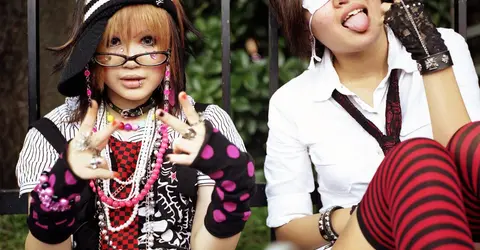
The trendy Harajuku district is the cradle of the most unlikely clothing fashions.
DR
To a point, Harajuku transcends the title of simply a neighborhood. Those who roam its streets range anywhere from curious tourists to those spearheading the fashion and pop culture that it calls home, and to walk through it entails walking through history in more than just one regard.
To learn more about Japan and Japan travel, be sure to sign up for our newsletter and follow us on Instagram!
Explore Tokyo with a local expert!
The streets of Harajuku have so much to offer! Explore Tokyo with the help of a local guide!
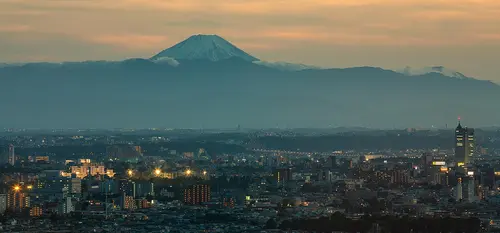
Mount Fuji from Yebisu Garden Place Tower
@Ximonic on Wikimedia, CC BY-SA 4.0
